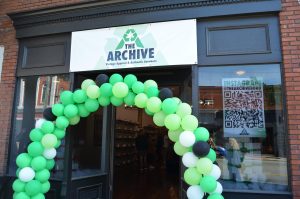GSU faces reaccreditation in 2014
April 1, 2013
Georgia Southern University is preparing for the long reaccreditation process through the Southern Association of Colleges and Schools.
“The accreditation is for the entire university. (Accreditation) essentially sanctions the university to be recognized as a degree-granting, approved institution,” Dr. Jean Bartels, provost and vice president of academic affairs, said.
The procedure for reaccreditation takes place every 10 years, and the process takes about a year and a half, Pamela Cravey, coordinator of communications and external affairs for SACS, said.
“It’s very rare that a school goes on probation or loses its accreditation altogether. You really have to be really not doing very well in all aspects,” Bartels said.
“Accreditation is a voluntary method of quality assurance developed more than 100 years ago by American universities and secondary schools and designed primarily to distinguish schools adhering to a set of educational standards,” according to advanced.org, an accreditation website.
“All we are interested in is that each institution is in compliance with accreditation standards,” Cravey said.
According to the 2012 addition of the Principles of Accreditation, GSU has to complete two documents in the preparation process before being re-accredited. They are the compliance certification and the Quality Enhancement Plan.
“We put together a lot of materials to answer (SACS) standards and usually put that online and accreditors from someplace else will go online and look at all of our material,” Bartels said.
The Compliance Certification is submitted approximately 15 months before the institution’s scheduled reaffirmation. It is a document completed by the institution that demonstrates its judgment of the extent of its compliance with each of the requirements set.
The QEP is submitted four to six weeks prior to the on-site review. It is a document that states the key issues that the institution is in the process of identifying and its plan on how to deal with these issues.
“Every institution must have a quality enhancement plan, which is looking at our own situation and identifying something we would really like to work on to improve,” Bartels said.
To figure out what the university could improve on, online forums will be set up for students and faculty to express what they would like for the university to improve on academically, Bartels said.
“What they will do is gather information about what kind of project we want to start working on,” Bartels said.
The next step in the reaffirmation process is the review by the Commissions on Colleges, according to the Principles of Accreditation.
On and off-site evaluations are done by officials at peer institutions all over the country, Cravey said.
One team scrutinizes the documents provided by the school and another team will come to campus for the on-site evaluation, Cravey said.
“We are working hard on what we are doing with student learning outcomes and assessment, and that is the area we are putting the most energy in right now,” Bartels said.
Reaffirmation, as Cravey and her colleagues call it, is also a time when an institution can review its strengths and areas that can use improvement.
If a school is not in compliance with the set standards, there are sanctions applied and requests of specific information that the school will have to supply, Cravey said.
Bartels said, “Like how we want our students to be successful, we want out institution to do that too.”






